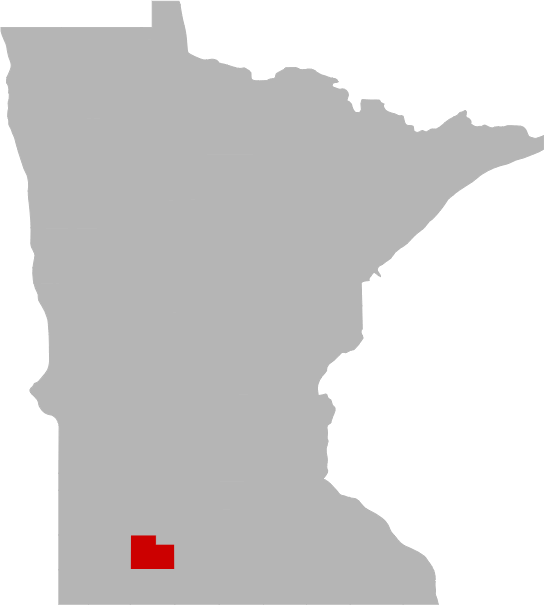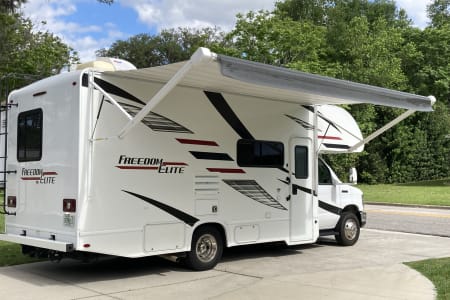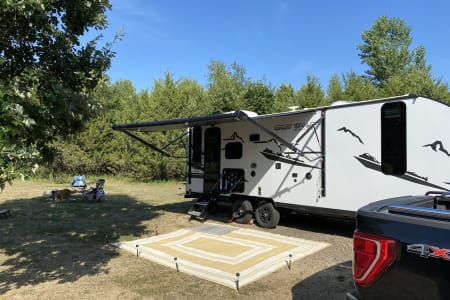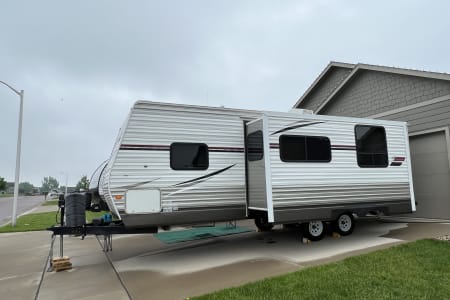Today's Best Fishing Times
Get the best fishing times for Bean Lake with Lake-Link's Fishing Forecast. SEE MORE

Share your catch!
We want to see what you've caught on Bean Lake.Frequently Asked Questions About Bean Lake, MN
- How big is Bean Lake?
- How deep is Bean Lake?
- What kind of fish can you catch in Bean Lake?
- What are the closest cities to Bean Lake?
- Are there places to stay in the Bean Lake area?
- Are there boat launches on Bean Lake?
- Are there places to eat and drink near Bean Lake?
- What is the average air temp for Bean Lake?
- Are there any state parks near Bean Lake?
How big is Bean Lake?
How deep is Bean Lake?
What kind of fish can you catch in Bean Lake?
Other fish species in the lake include Fathead Minnow, Green Sunfish and Orangespotted Sunfish.
What are the closest cities to Bean Lake?
Are there places to stay in the Bean Lake area?
More Lodging Options
Are there boat launches on Bean Lake?
Are there places to eat and drink near Bean Lake?
Explore the Bean Lake area in a RV
Are you looking for an adventurous vacation option that won't break the bank? Look no further than renting an RV! Contrary to popular belief, the process is much simpler than you might imagine. With just a few easy steps, you'll soon be experiencing the ultimate freedom and convenience of exploring the open road in your very own recreational vehicle. And the best part? RV travel can save you up to 60% compared to other types of vacations! With the money you'll save, you'll be able to travel even more and create unforgettable memories along the way. So why wait? Start planning your next adventure today with an RV rental. Learn more about renting a RV.




History & Status of the Fishery
INTRODUCTION
Bean Lake is located in Cottonwood County approximately 3 miles northwest of Storden. The 141 acre lake has a maximum depth of 10 feet, a reduction of 2 feet since the 2008 population assessment. Up until the fall of 2011 the water level in Bean Lake was rising until maximum depths approached more than 14 feet in June of 2011. Local agricultural and highway drainage was significantly affected by the increased water level so a new water level was maintained with a new outlet established in the late fall of 2011. Bean Lake has a watershed-to-lake ratio of 3-to-1 indicating a fairly small watershed. The watershed of Bean Lake is characterized as highly agricultural with row crops and pattern tile drainage dominating the landscape. As a result of the predominant agricultural landscape, inputs of excessive nutrients are common in Bean Lake. One indicator of excessive nutrients and inputs is high alkalinity, usually greater than 200 ppm (280 ppm in 2014). Additionally, high productivity leads to an increase in usage of oxygen in the lake (high Biological Oxygen Demand [BOD]). High BOD, magnified by ice and snow cover in the winter eliminating or reducing the air water interface, led to aeration in 1991. From 1991 to 2013 there were no reported or observed partial winterkills due to low dissolved oxygen; however, during the winter of 2013-2014 there was thick ice coupled with longer than usual periods of snow cover on the ice that caused low dissolved oxygen. A fish kill was observed and documented in the late winter and early spring of 2014. Due to severe winter conditions over an extended period during the winter of 2013-14, the aeration system on Bean Lake was unable to prevent a partial winterkill. A winterkill assessment was conducted in the spring with trap netting and electrofishing which revealed only a partial winterkill as walleye, black crappie, black bullhead, and common carp were still present. A population assessment with 2 gill nets and 9 trap nets was conducted in July of 2014 following restocking to gather further information on the recovery of the game fish populations and fish community as a whole.
WALLEYE
Walleye were one of the species of fish that was impacted by the partial winterkill during the winter of 2013-2014. However, 2 large fish over 20 inches were still present in the spring post winterkill sample which indicates some fish did survive. To boost the recovery of the Walleye population 162,138 walleye fry were stocked in the spring. During the population assessment in July, 15 Walleye were caught in 2 gill nets and 11 Walleye were caught in 9 trap nets. The catch rate of 7.5 Walleye per gill net is a reduction from catch rates of 45.0 per gill net in 2002 and 25.3 per gill net in 2008. However, the catch rate was still within the expected catch rate range of 2.3 to 18.1 fish per gill net. The Walleye in the gill nets had an average length of 17.1 inches with an average weight of 2.1 pounds and the Walleye in trap nets had an average length of 22.7 inches with an average weight of 4.3 pounds. In addition, there was a higher than average proportion of Walleye larger than 15 inches in the population compared to other lakes. Six age groups of walleye were also observed indicating successful survival of past stocked walleye. The Walleye in the gill net and trap net sample were also in excellent condition indicating adequate food is still available in the lake. We observed more than 130 juvenile walleye in July shoreline seining indicating good survival of stocked walleye fry in the spring. To further boost the number of walleye in Bean Lake the DNR stocked an additional 3,979 walleye fingerling (6-10 inches) in the fall. Good survival of Walleye fry and stocking of additional walleye fingerling into Bean Lake coupled with a healthy remaining adult population of Walleye should create a fishable population of Walleye relatively soon. Recovery of the population from the winterkill in 2013-2014 appears to be on track.
NORTHERN PIKE
No northern pike were sampled in the population assessment. Additionally, no northern pike were sampled in the spring winterkill assessment. The last time northern pike were sampled by the DNR was in 2002 when 6.5 northern pike were caught per gill net. In the spring of 2014, 1,491 northern pike fingerlings were stocked into Bean Lake. In near shore seining in July, six northern pike juveniles were caught indicating some survival of the stocked fingerlings occurred. It will be important to stock additional northern pike fingerlings in Bean Lake as they are available to the DNR to help the population fully recover.
YELLOW PERCH
Forty-two Yellow Perch were caught in gill nets and 26 Yellow Perch were caught in trap nets. Yellow Perch caught in the gill nets and trap nets were most likely a result of a spring stocking of 4,124 Yellow Perch adults because no Yellow Perch were sampled during the post winterkill assessment. Even so, catch rates of Yellow Perch were within expected ranges for both gill nets and trap nets. The average length of Yellow Perch in the gill nets was 6.4 inches and the average length of Yellow Perch in the trap nets was 6.8 inches. Additionally, the body condition of all the Yellow Perch caught was exceptional. Also encouraging, the spring stocked Yellow Perch were also able to successfully reproduce; juvenile Yellow Perch were caught in July near shore seine sampling. Historical catch rates of Yellow Perch from 1989 to 2002 ranged from 47 to 91 fish per gill net indicating high abundances of Yellow Perch in the past. In 2008, the catch rate dropped dramatically to under 1 fish per gill net with only 1 per trap net which was linked to very high abundances of Walleye feeding heavily on the Yellow Perch population. Due to the restocking effort following the winterkill and a lower density of Walleye in 2014, it appears the Yellow Perch population is staged to make a return to high abundances because high stocking success, good catch rates, successful reproduction, and exceptional health were all observed in 2014.
BLACK BULLHEAD
Black Bullhead did not appear to be affected greatly by the winterkill and were found to be abundant during winterkill netting in the spring of 2014. Additionally, the gill net catch rate in 2014 was the second highest observed since 1989 at 309.5 fish per gill net. The 2014 gill net catch rate is 2 times the upper normal value of 150.6 fish per gill net. Black Bullhead in the gill nets and trap nets ranged in length from 5.8 to 7.4 inches indicating at least 1 highly successful age group. The overall condition of Black Bullhead in the sample was lower than expected and may indicate poor health due to overpopulation. No juvenile Black Bullhead were captured in near shore seining which may indicate that the currently overabundant population did not have successful reproduction or juveniles were quickly eaten by other species.
BLACK CRAPPIE
Only 1 10-inch Black Crappie was caught in the spring post winterkill sampling. In July, 18 Black Crappie were caught in the population assessment trap nets. The catch rate of 2.0 fish per trap net was within the expected range of 1.2 to 20.5 fish per trap net, but was less than the 2008 catch rate of 4.3 fish per trap net and long term average catch rate of 3.9 fish per trap net. While the catch rate was down in 2014, the size structure was good with an average size of 11.0 inches (9.8 to 12.1 inches). Additionally, the overall body condition of the Black Crappie population was excellent. It appears that good adult stock available in the lake and should have a successful spawn in 2015 especially given the mild winter in 2014-2015.
COMMON CARP
Common Carp were first observed in Bean Lake in 2008. There is no known natural pathway for Common Carp to easily enter Bean Lake, so it is suspected that they made their way into Bean Lake through a bait bucket or by way of an illegal stocking. In 2014, 3 common carp were captured; 2 in the gill nets (1.0 per net) and 1 in the trap nets (0.1 per net). The catch rates in 2014 are down from initial catch rates in 2008, but the species appears to be firmly established in the lake. There are no known eradication methods for Common Carp without killing the entire fish community in the lake. Even when the fish poison rotenone is used to poison a lake and kill the fish community or when there is a winterkill, there is still a chance that the rotenone or winterkill will not kill 100% of the fish in the lake. Therefore, it is highly likely that Common Carp will remain present in the lake. Therefore, the DNR will be monitoring Walleye and Northern Pike populations and stocking them to keep them at abundances where adults of those species will prey upon juvenile Common Carp and keep them in check. Future monitoring of the fish population with gill netting and trap netting in 2018 will help to monitor the Common Carp population.
OTHER SPECIES
Other species sampled in Bean Lake were Orangespotted Sunfish and Yellow Bullhead. These species are common in southwestern Minnesota Lakes and usually are found in low abundances. Occasionally, Orangespotted Sunfish can become a nuisance as they easily stunt when overpopulated and compete with managed species for food. However, it appears that Orangespotted Sunfish and Yellow Bullhead are merely low density residents in Bean Lake that may actually add to the forage base for Walleye and Northern Pike.
SUMMARY
Bean Lake appears to be recovering quickly from a partial winterkill during the winter of 2013-2014. Walleye stocking in the spring and fall of 2014 has helped to boost the existing adult population. Additionally, Yellow Perch were reintroduced in the spring of 2014 and survival looks very good. Continued monitoring of Bean Lake will be done in 2018 and supplemental stocking in 2015 and 2016 may be done to continue the recovery of the lake. Walleye anglers may find good opportunities for fishing in 2015 and beyond due to good numbers and sizes of Walleye currently in Bean Lake.
Prepared by Nate Hodgins
What is the average air temp for Bean Lake?
Are there any state parks near Bean Lake?
For more Minnesota State Park information see our State Park Guide.
More Nearby Lakes To Explore
There's more lake's to explore around Bean Lake...| DISTANCE | ACRES | MAX DEPTH | |
| Double Lake | 1.4 mi | 240 | 9 ft |
| Clear Lake | 3.0 mi | 81 | 8 ft |
| Lake Louisa | 7.2 mi | 230 | 8 ft |
| Shoper-Bush Reservoir | 8.7 mi | 14 | 15 ft |
| Buffalo Lake | 10.2 mi | 127 | 8.5 ft |
| Laura Lake | 11.5 mi | 22 | 21 ft |
| Arnold's Lake | 12.3 mi | 48 | 13 ft |
| Talcot Lake | 14.0 mi | 873 | 6 ft |
| Fox Lake | 14.3 mi | 172 | 8.5 ft |
| Wellner-Hageman Reservoir | 14.4 mi | 75 | 24 ft |

















